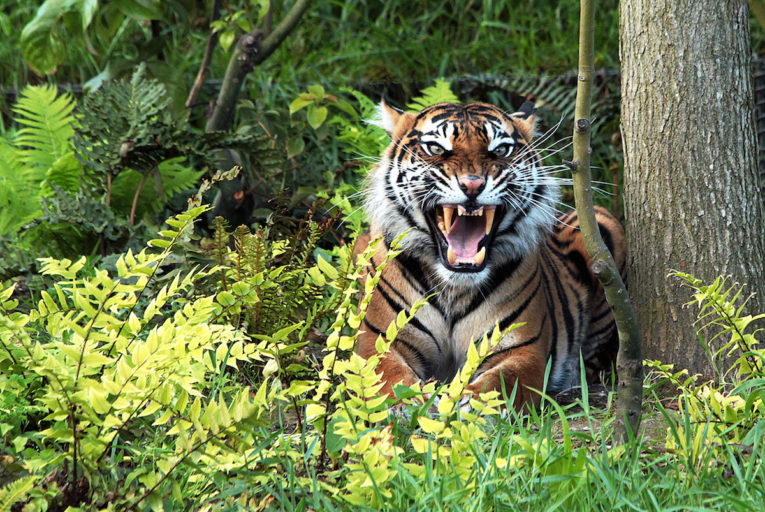KOSÑIPATA, Peru – “It’s the best road I’ve ever gone birding on, in terms of the variety of habitats and birds,” says Victor Emanuel, one of the pioneers of modern…
With dwindling U.S. ocelot populations facing little hope for expansion, an innovative public-private alliance is gearing up to breed and reintroduce a new population. They’ll face uniquely Texan conservation challenges and opportunities.
Designing roads with wildlife in mind is an idea whose time hasn’t come soon enough: nearly a million animals are killed on roads every day, just in the U.S., and…
KATHMANDU — The spring season in the Northern Hemisphere is a critical time for red pandas, particularly in Nepal. This is the period when these furry, tree-dwelling animals spend a…
The nature of her father’s work, as an aerial fumigation pilot, meant that Daniela Araya lived in many areas of Costa Rica when she was a child. She usually traveled…
On the main road of the Laguna Atascosa National Wildlife Refuge in South Texas, two ocelots recently jumped out in front of a car. The mother ocelot then went back…
KATHMANDU — It starts off like the premise for a joke: “Why did the tigers cross the road?” But for researchers and conservationists in Nepal, the spread of roads throughout…
READER ADVISORY: This story contains images of dead wildlife that some viewers may find disturbing. Two Asian elephants trundle along the rail tracks. From the window of the train, Phileas…
Brazil’s railway network spans some 30,000 kilometers, or nearly 19,000 miles, but researchers know little about its impact on wildlife. What’s clear, though, is that wildlife kills are the most…
Brazil should be the country of highest priority for measures to save primates from the threats posed by roads and railway lines, according to a study. It highlighted the Amazon…
KATHMANDU — Roads that run close to an important national park in Nepal's southern plains could result in an increased rate of roadkill that would cut the park’s population of…
Brazil, one of the largest countries in the world, is crisscrossed by a network of roads and highways that run more than 1.7 million kilometers (1.06 miles) — enough to…
The figures vary and come from different sources, including the government, but they all point to the wildlife massacre taking place on the roads of Brazil’s Mato Grosso do Sul…
There once was a stretch of Trans-Canada highway so perilous it was known as “The Meat Maker.” The then-infamous section of road that transects Banff National Park, a breathtaking expanse…
It’s midday in summer, the mercury climbing above 40° Celsius (104° Fahrenheit), and nature guide Nuno Roxo is leading us on a hike in Guadiana Valley National Park in Portugal.…
The Trans-Sumatran Highway is a $1.1 billion dollar project spanning 2,700 kilometers – from Banda Aceh in the north to Bandar Lampung in the south – and is designed to…
The top stories from our Spanish-language service, Mongabay Latam, investigated Colombia’s roadkill rates; Chile’s marine forests; and Chinese energy projects in Ecuador. Mammals pay highest toll on Colombia’s highways Plans…
India’s growing network of roads and railway lines, often crisscrossing forests and wild lands, has turned deadly for wildlife. In December last year, for example, an 8-year-old male tiger died…
Roads can be arteries that ferry goods and people, connect communities and markets and bolster economic development. But if they’re not well-planned, they can instigate conflict, saddle countries with debt…
Roads can present big problems for wildlife by severing populations, degrading and fragmenting habitat, opening up wildnerness to poachers, and directly killing animals that stray into the paths of oncoming vehicles.…
Cars versus leopards: big cats and other animals face decline due to rising traffic. A big cat crosses the Mysore-Mananthavadi Highway as commercial vehicles look on. Photo credit: Vikram Nanjappa.…



























